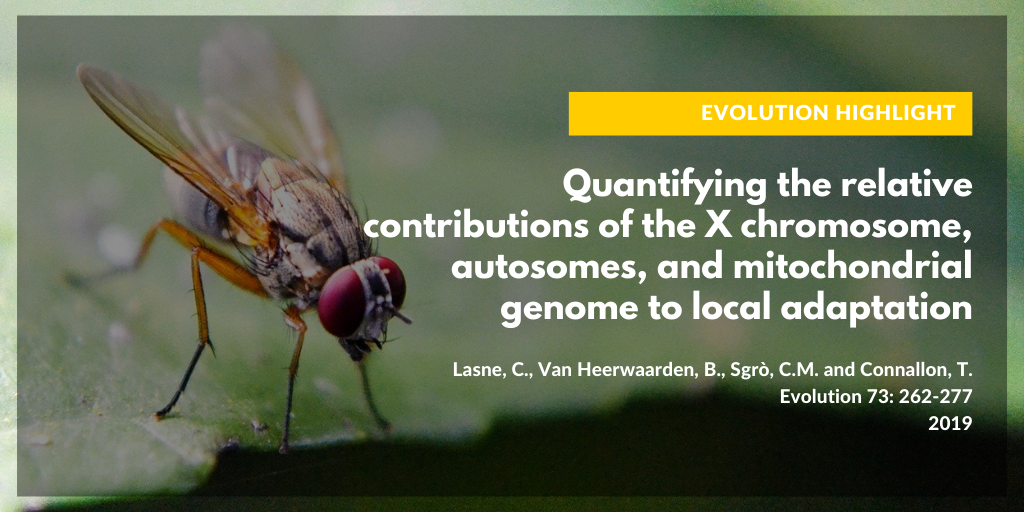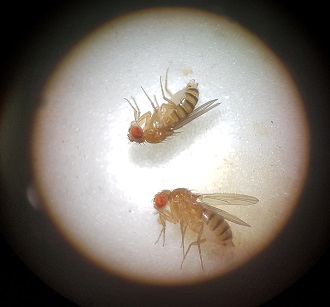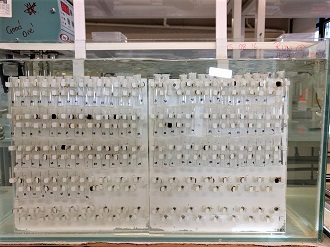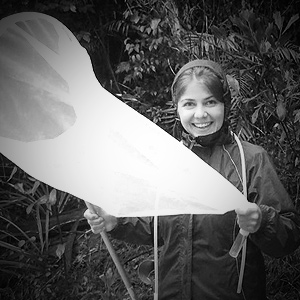Each month, the Evolution Highlights series will highlight some of the interesting and varied papers published within the last few years in Evolution. The goal of these Evolution Highlights is to let our readers learn more about how the highlighted study came into existence, and to invite the authors to share stories and tips from the perspective of a recently published author. We welcome nominations and self-nominations for the Evolution Highlights. Find out how to submit a paper here.

"Quantifying the relative contributions of the X chromosome, autosomes, and mitochondrial genome to local adaptation"
Lasne, C., Van Heerwaarden, B., Sgrò, C.M. and Connallon, T. (2019), Quantifying the relative contributions of the X chromosome, autosomes, and mitochondrial genome to local adaptation*. Evolution, 73: 262-277. https://doi.org/10.1111/evo.13647
https://onlinelibrary.wiley.com/doi/abs/10.1111/evo.13647
Abstract:
During local adaptation with gene flow, some regions of the genome are inherently more responsive to selection than others. Recent theory predicts that X-linked genes should disproportionately contribute to local adaptation relative to other genomic regions, yet this prediction remains to be tested. We carried out a multigeneration crossing scheme, using two cline-end populations of Drosophila melanogaster to estimate the relative contributions of the X chromosome, autosomes, and mitochondrial genome to divergence in four traits involved in local adaptation (wing size, resistance to heat, desiccation, and starvation stresses). We found that the mitochondrial genome and autosomes contributed significantly to clinal divergence in three of the four traits. In contrast, the X made no significant contribution to divergence in these traits. Given the small size of the mitochondrial genome, our results indicate that it plays a surprisingly large role in clinal adaptation. In contrast, the X, which represents roughly 20% of the Drosophila genome, contributes negligibly—a pattern that conflicts with theoretical predictions. These patterns reinforce recent work implying a central role of mitochondria in climatic adaptation, and suggest that different genomic regions may play fundamentally different roles in processes of divergence with gene flow.
Evolution Highlight by Clementine Lasne
Institute of Science and Technology Austria, Institute of Science and Technology Austria


Heat resistance assay set-up
